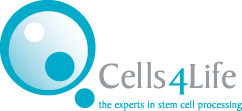Umbilical cord blood has long been recognized as a valuable source of life-saving stem cells.
Since the first cord blood transplant was carried out in 1988 for a patient with Fanconi anaemia, it’s estimated that more than 40,000 cord blood transplants have been delivered worldwide, improving countless lives. [1]
Today, new research is revealing even more potential uses for cord blood, especially in combination with other types of transplants.
One exciting development in this area is the emergence of ‘haplo cord’ transplants, which combine cord blood stem cells with haplo-identical bone marrow, offering promising outcomes and improved survival rates for patients who need stem cell transplants.
What is a haplo cord transplant?
A haplo cord transplant is a procedure that involves the infusion of stem cells from both a cord blood unit and a haplo-identical bone marrow donor.
‘Haplo-identical’ means the donor is a half-match to the patient, typically a parent or sibling.
Both bone marrow and umbilical cord blood contain haematopoietic stem cells (HSCs) which can be used to treat blood cancers like acute myeloid leukaemia (AML) and lymphoma.
HSCs are blood-forming stem cells, meaning that they can differentiate into different kinds of blood cells, including white blood cells, red blood cells, and platelets.
The transplant works by infusing a patient with these blood-forming stem cells so that the patient’s body can begin to produce healthy, rather than diseased, blood cells.
In a haplo cord transplant, the patient is coinfused with both bone marrow stem cells from a related, partially matched donor, along with donated cord blood stem cells.
Haplo cord transplants are not a new concept—they have been under study for over a decade. [2]
In 2014, a Spanish clinical trial demonstrated that the outcomes of haplo cord transplants were comparable to those of traditional matched unrelated donor transplants, putting haplo cord transplants among the frontline for allogeneic stem cell transplant options. [3]
More recently, research led by oncologist Dr. Depei Wu from Soochow University in China has provided more detailed evidence on this transplant approach.
Across trials for AML, B-ALL (B Cell Acute Lymphoblastic Leukaemia) leukaemia and aplastic anaemia it was found that the addition of cord blood to a haploidentical transplant resulted in significant improvements in overall survival. [4] [5] [6]
Why are haplo cord transplants important?
The most exciting and important results demonstrated by studies into haplo cord transplants have been the effect on overall survival rates.
A recent multicentre, phase 3 trial, conducted on patients with acute myeloid leukaemia (AML), showed that those who received a haplo cord transplant had a significantly better three-year overall survival rate compared to those who only received a haploidentical transplant.
Specifically, 80.5% of patients in the haplo cord group survived after three years, compared to 67.8% in the haplo-only group. These results are encouraging for both patients and doctors, suggesting that haplo cord transplants may offer a better chance of long-term survival. [7]
In addition to the improved survival rates, other trials have found that haplo cord transplants also offer other potential advantages.
The addition of cord blood stem cells in transplants has been shown to improve immune responses by accelerating neutrophil (a type of white blood cell that helps the body fight infection) engraftment and platelet recovery. [8] [9]
These outcomes are critical for patients undergoing stem cell transplants, as it means reductions in the risks of infections and complications, including AML relapses.
Additionally, cord blood showed improvements in GvL (graft-versus-leukaemia) outcomes – where donor cells attack leukaemia residing in the host patient – without significantly increasing graft-versus-host-disease (GvHD) rates. [10]
The future of haplo cord transplants
While the early results are promising, there is still much to learn about haplo cord transplants.
Oncologists need to explore various factors, such as the ideal chemotherapy regimen, the role of each donor source, and strategies to minimise complications like graft-versus-host disease.
Additional randomised clinical trials are necessary to better understand the full potential of this transplant approach, however, current research suggests that for patients without a fully matched donor, the combination of cord blood and haplo-identical bone marrow could offer a new hope for survival rates and long-term outcomes.
If you’re interested in learning more about cord blood banking and how it can help in life-saving treatments like haplo cord transplants, fill out the form below to receive a free guide to cord blood banking.
References
FIND OUT MORE, REQUEST YOUR WELCOME PACK TODAY
All you need to know to make an informed decision.
Provide your contact details to request:
– Complete Welcome Pack and Parent’s Guide
– Information via email
– Contact from our specialist advisors








